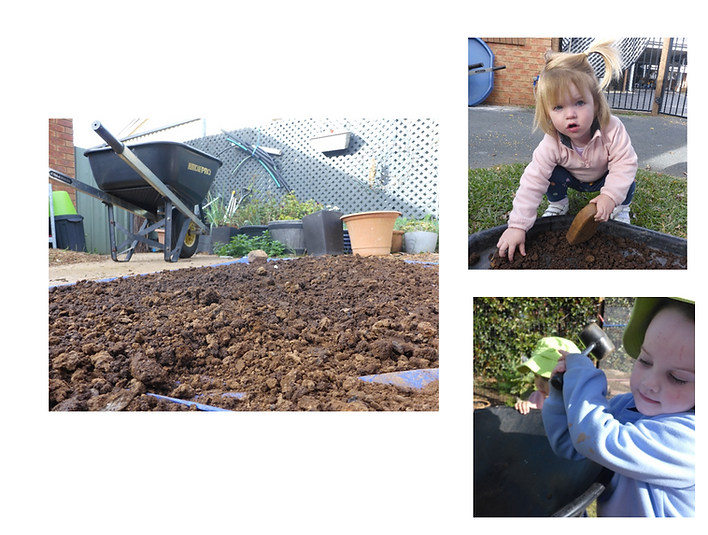Seed bombs
Hi all, welcome to my second attempt at becoming a consistent writer.
Today, I would like to touch on “seed bombs”.
Before we started enjoying these weeks of cold, wet days, back when it was possible to keep anything relatively dry while sitting outside in a wheelbarrow, I had invited the children at Stepping Stones to explore making clay-pellets for broadcasting seeds.
This was because, I recently finished reading both, One Straw Revolution and Sowing Seeds in the Desert by Masanobu Fukuoka and was feeling inspired by his work and mission.
Masanobu was a Japanese man who in his early years worked as a scientist and customs official, studying plants and plant diseases before undergoing a kind of spiritual awakening and returning to his small family farm where he began experimenting with a return to more natural farming without the use of chemical fertilisers, pesticides or heavy machinery.
Over a period of decades, and with a Zen approach, or as he called it “do-nothing” farming, he observed the natural processes around him and constantly reflected, what if he didn’t do this or do that, he was able to evolve a system of farming that produced high quality, nutrient-rich foods year-long. Including rice, barley and fruit while applying the bare minimum amount of labour and working WITH, not against nature.
One of the few techniques that he did incorporate into his work, was mixing seeds into clay pellets.
The benefits of clay pellets were tri-fold, by enclosing the seeds into little clay balls, they were protected against birds and insects, it also made broadcasting the seed by hand much easier (clay pellets being less prone to blowing away on the wind) and finally the seeds would remain so encased until the rains came and dissolved the clay which was also conveniently an optimal time for germination to take place.
In his later life, Masanobu became passionate about reversing desertification and he spent some time travelling the world to teach his methods in the hope of saving the environment and vulnerable peoples from man-made deserts.
The clay-pellet method, along with as large a variety of seeds as could be found, he believed, could be distributed to desert areas from the air to allow nature to heal herself.
Masanobu Fukuoka has become a legend among permaculturists, his philosophy and techniques have inspired people all over the globe and having become one of those people myself I felt called to explore the clay-pellet method here at Stepping Stones.
Also referred to as “seed-bombs” among guerilla gardeners, we had lots of fun getting our hands dirty as we experimented with the process.
Using clay, that was excavated onsite, I went about drying it in the sun for a few days before bringing it into the playgrounds and asking our children to help crush it into a powder.
They didn’t need much encouragement, I found plenty of willing helpers, and soon it was just a case of sifting the fine clay particles from the larger clogs.
The next day I assembled everything we’d need to make our own “seed-bombs”,
- The now finely sifted clay
- Some fine compost mix
- A spray bottle of water
- And a wild assortment of seeds (including domestic veggies, flowers and even some of my favourite nitrogen fixing weeds)
Then I was off to visit all the different rooms to share the process with as many children as I could manage.
It turned out to be a pretty easy process, you simply add a little clay, some compost, mix in the seeds, then lightly spray with water and stir until you achieve a clumping consistency.
Perhaps I should have been less surprised at how messy it would become, but the children seemed to enjoy it.
And so did I.
I liked how easy it was to get the mix
just right for rolling into little pellets,
and I loved that I was able to share my
passion for nature while imparting a
useful skill unto a future generation.
That, in doing so I might honour the men and women of the past, who like Masanobu Fukuoka, have left us a legacy of hope and a roadmap for responsible stewardship of this beautiful place we call home.
It may not be the prettiest-looking creation, but it was certainly a worthwhile experience.
Until next time, enjoy the wild places wherever you are,
Dallas Forrester
















